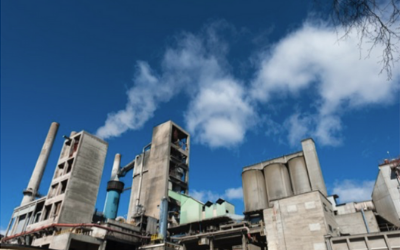Deployment of bio-CCS in the cement sector: an overview of technology options and policy tools
Cement is a key input to concrete, the most widely used construction material in the world and upon which many functions of modern society rests. At the same time, production of cement is one of the single most important economic activities in terms of emissions of greenhouses gases. If global climate change mitigation ambitions are to be fulfilled, emissions from cement production will have to decrease by around 95% between 2020 and 2050 according to the IEA’s 2021 Net-Zero report. A broad portfolio of measures will have to be taken to reach this, including energy efficiency improvements, decreased cement demand and an increased use of alternative binder materials. However, it will most likely be impossible to reach deep emission reductions in the cement sector without the implementation of carbon capture and storage (CCS) technologies.
This report reviews the prospects for implementation of CCS in the cement sector. Particular attention is given to the opportunities of combining this with the use of biogenic fuels for process heat, so-called BECCS or bio-CCS. Bio-CCS could prove to be a vital tool to make cement production with net-zero CO2 emissions possible and could potentially also enable “negative emissions”, also referred to as carbon dioxide removal (CDR). In addition to a thorough review of the technological options at hand, the report also discusses the business and policy aspects that need to be put in place to enable this.
There are several different technological options available by which bio-CCS can be implemented in the cement sector. Their characteristics vary when it comes to operational aspects and level of investments needed, and these key aspects are discussed in this report. One thing that the different options do have in common is that it is inevitable that even with cost reductions that come with increasing technological maturity, their introduction will entail substantial increases in the production cost of cement. A key question for cement decarbonization is how these costs should be covered. Here, the fact that a large portion of societal use of cement in one way or another is subject to public procurement means that changing procurement guidelines to mandate low-CO2 emission cement in publicly funded projects could be a promising policy measure.

Photo from Heidelberg Cement
This report is one of a series of publications that are carried out under the Deployment of BECCS/U Value Chains project of IEA Bioenergy with the aim to highlight sector-specific characteristics. The studies provide deeper insights into the key aspects that come into play in the process of practically setting up value chains for capture, transportation and sequestration or utilization of biogenic CO2.
Main authors: Otávio Cavalett & Francesco Cherubini of the Norwegian University of Science and Technology (NTNU); Olle Olsson of Stockholm Environment Institute (SEI)


